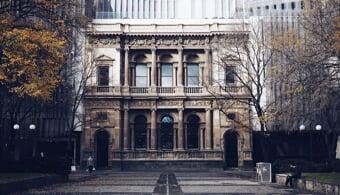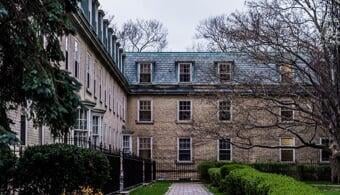Luoyang - Ancient Capital of 13 Dynasties
Xia Dynasty
(ca. 2100 - 1600 BCE)
The history of Luoyang can be traced back to the Xia dynasty (ca. 2100 - 1600 BCE), and throughout the centuries, it has witnessed various periods of war, peace, prosperity, and decline. As a strategic location along the ancient Silk Road, Luoyang was a hub for trade, religion, and culture, which in turn led to the development of new industries, technological advancements, and artistic achievements.
Wei and Jin dynasties
(220–420 CE)
In the Wei and Jin dynasties (220–420 CE), Luoyang became a major Buddhist center in China due to Emperor Ming’s support for the religion. The famous Buddhist monk Faxian traveled to India from Luoyang and brought back Buddhist scriptures, which greatly influenced Buddhism’s spread in China.
Eastern Zhou Period
(770–221 BCE)
During the Eastern Zhou period (770–221 BCE), Luoyang was a significant cultural and political center and the birthplace of Confucianism. The Zhou Dynasty established its capital in Luoyang and ruled China until it was overthrown by the Qin Dynasty in 221 BCE. The Qin Dynasty, however, only lasted for a short period before it was overthrown by the Han Dynasty in 206 BCE. The Han Dynasty chose Luoyang as its capital and built new monumental structures such as the White Horse Temple and the Luoyang Eastern Zhou Royal Horse and Chariot Pit.
Tang Dynasty
(618–907 BCE)
The Tang Dynasty (618–907 BCE) was considered the golden age of Chinese civilization and was one of the most prosperous periods in Luoyang’s history. During this time, many of the city’s most remarkable landmarks were built, such as the Longmen Grottoes, which are a UNESCO World Heritage Site and one of China’s greatest artistic masterpieces. The Tang dynasty also witnessed the ascension of the Empress Wu Zetian, one of China’s most controversial and notable rulers, who ruled from Luoyang.
Luoyang is one of the ancient cities that has been central to China’s culture and heritage for over 4,000 years. Located in the central part of China in the southeast of Henan Province, Luoyang was once the capital of nine important dynasties, including the Eastern Zhou, Wei, Jin, and Tang.
Lost Period
In the following centuries, Luoyang’s decline began as it experienced repeated invasions by various tribes in China’s north. By the Ming dynasty (1368–1644), it had lost its status as the capital and became a small city struggling against floods and epidemics.
Today
Today, Luoyang has emerged as a crucial industrial, educational, and cultural center in central China. It has also become one of the most popular tourist destinations in China, attracting countless visitors each year to marvel at its ancient wonders and rich cultural heritage. From the Longmen Grottoes to the Luoyang Museum and Old City Wall, Luoyang is a treasure trove of history, culture, and tradition that deserves respect and appreciation from all those who visit.
Things to do in Luoyang
Explore the Longmen Grottoes, a UNESCO World Heritage site featuring thousands of ancient Buddha statues and intricate carvings.
Marvel at the Shaolin Temple, the birthplace of Kung Fu, and watch a performance by skilled martial artists.
Welcome to the Shaolin Temple, an iconic and revered sanctuary of martial arts and Zen Buddhism. Situated in the verdant Songshan Mountain range in Henan province, China, this ancient monastery holds a profound significance not only in Chinese culture but also in the hearts and minds of martial arts enthusiasts worldwide. Believed to be founded in the 5th century, the Shaolin Temple is known as the birthplace of Shaolin Kung Fu, an extraordinary form of combat renowned for its elegance and power. Within its hallowed walls, countless generations of warrior monks have dedicated themselves to the rigorous training of mind, body, and spirit. Beyond martial arts, the temple showcases an exquisite blend of architectural marvels, including halls, pagodas, and tranquil courtyards. Moreover, Shaolin Temple serves as a center for spiritual enlightenment, embracing the teachings of Zen Buddhism and offering a serene escape from the hustle and bustle of modern life. It is a sanctuary where visitors can immerse themselves in the timeless traditions of self-discipline, introspection, and harmony. Whether you seek to witness breathtaking demonstrations of physical prowess, explore the depths of inner peace, or simply experience the awe-inspiring aura of this cultural gem, the Shaolin Temple awaits, ready to captivate and inspire you.
Visit the White Horse Temple, the first Buddhist temple established in China, with beautiful traditional Chinese architecture and peaceful surroundings.
Learn about Luoyang’s rich history and culture at the Luoyang Museum, filled with fascinating exhibits and artifacts.
Wander through the Luoyang Old Town, featuring traditional architecture, shops, and restaurants.
Enjoy the beautiful scenery and vibrant colors at the Luoyang Peony Festival in April and May, featuring over 20 million peony flowers in bloom. Admire the stunning variety of peonies at the Luoyang International Peony Garden.
How can I join sports club?
Hike the scenic Wangcheng Park, offering picturesque views of the city and surrounding mountains.
Walk through the ancient gates of Lijing Gate (Lijingmen), a historical landmark dating back to the Tang Dynasty.
Guanlin Temple, a sacred sanctuary in Luoyang, pays tribute to the legendary Chinese general Guan Yu and preserves the rich heritage of Chinese history and culture.
Transportation Guide
Transportation Hubs
How to get to Luoyang?
Hand-picked Hotels
Luoyang Xinyuan International Hotel
No. 300 Jiudu East Road, Old Town District, Luoyang, Henan 471000
+86-379-63957888
Stanrdard Class
Around 40USD per room per night
Ramada by Wyndham Luoyang Downtown
Superior Class
Around 60 USD per room per night


